I think the 2 monuments above probably are the best indicators of what the Dutch resistance entailed during WWII. On the left is the monument called “de Dokwerker” the Dockworker . This was erected in Amsterdam to remember those who died during the “February strike” in 1941. On the right is a monument to remember the resistance fighters and soldiers from my hometown of Geleen who fell during WWII and subsequent war in Indonesia, which was a Dutch colony at the time. The monument was built in the suburb of Lindenheuvel because the ones who fell were from that part of town.
The Dutch resistance movement came about because of two simple facts – outrage that their country had been invaded and sheer horror at what happened to the Dutch Jews. Holland had swiftly fallen as a result of the onslaught of Blitzkrieg in 1940. There were many in Nazi Germany, including Joseph Goebbels, who had hoped that many Dutch people would absorb National Socialism into their culture. In this they were wrong. The Dutch rallied around their exiled royal family and the Dutch resistance was to provide the Allies with valuable intelligence information.
Ir would simply be impossible for me to tell all the individual stories because there are literally thousands of them. I have already touched upon the stories of Hannie Schaft,Pierre Schunk, Frits Philips and Major Bosshardt in earlier articles(I’ll put the links at the bottom of this one) I will go into a few events and people though in this blog.
24 February 1941 The February Strike
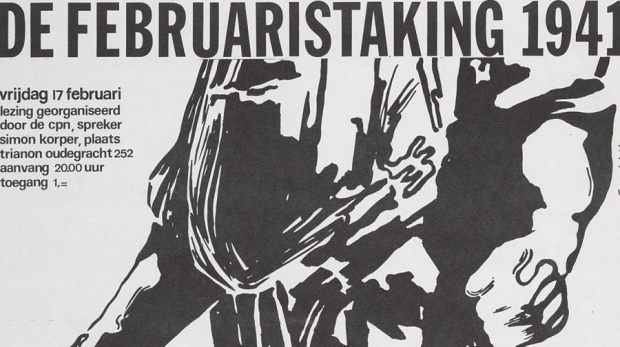
The Netherlands surrendered to Nazi Germany in May 1940, and the first anti-Jewish measures (the barring of Jews from the air-raid defence services) began in June 1940. These culminated in November 1940 in the removal of all Jews from public positions, including universities, which led directly to student protests in Leiden and elsewhere. At the same time, there was an increasing feeling of unrest amongst workers in Amsterdam, especially the workers at the shipyards in Amsterdam-Noord, who were threatened with forced labour in Germany.
Cause
As tensions rose, the Dutch pro-Nazi movement NSB and its streetfighting arm, the WA (“Weerbaarheidsafdeling” – defence section), were involved in a series of provocations in Jewish neighbourhoods in Amsterdam.
This eventually led to a series of street battles between the WA and Jewish self-defence groups and their supporters, culminating in a pitched battle on 11 February 1941 on the Waterlooplein in which WA member Hendrik Koot was badly wounded. He died of his injuries on 14 February 1941.
On 12 February 1941, German soldiers, assisted by Dutch police, encircled the old Jewish neighbourhood and cordoned it off from the rest of the city by putting up barbed wire, opening bridges and putting in police checkpoints. This neighbourhood was now forbidden for non-Jews.
On 19 February, the German Grüne Polizei(Ordnungspolizie) stormed into the Koco ice-cream salon in the Van Woustraat.
In the fight that ensued, several police officers were wounded. Revenge for this and other fights came in the weekend of 22–23 February, when a large scale pogrom was undertaken by the Germans. 425 Jewish men, age 20-35 were taken hostage and imprisoned in Kamp Schoorl
and eventually sent to the Buchenwald and Mauthausen concentration camps, where most of them died within the year. Out of 425, only two survived.
The strike
Following this pogrom, on 24 February, an open air meeting was held on the Noordermarkt to organise a strike to protest against the pogrom as well as the forced labour in Germany.
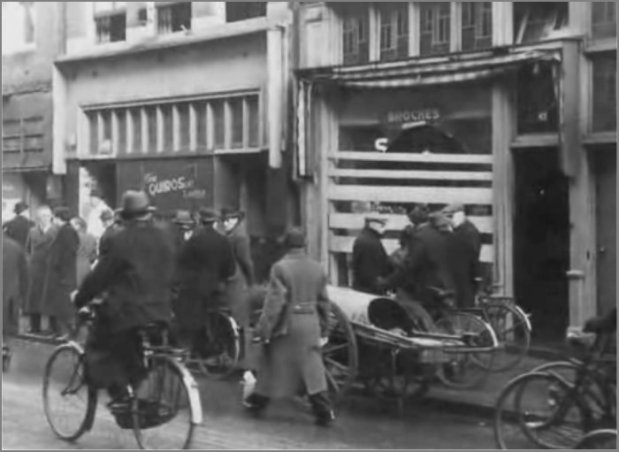
The Communist Party of the Netherlands, made illegal by the Germans, printed and spread a call to strike throughout the city the next morning. The first to strike were the city’s tram drivers, followed by other city services as well as companies like De Bijenkorf and schools.
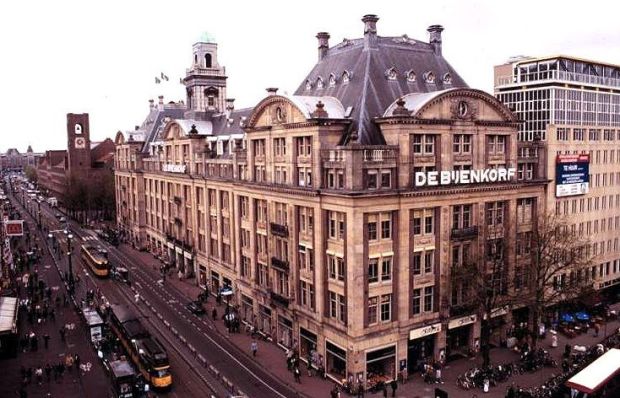
Eventually 300,000 people joined in the strike, bringing much of the city to a halt and catching the Germans by surprise.Though the Germans immediately took measures to suppress the strike, which had grown spontaneously as other workers followed the example of the tram drivers,
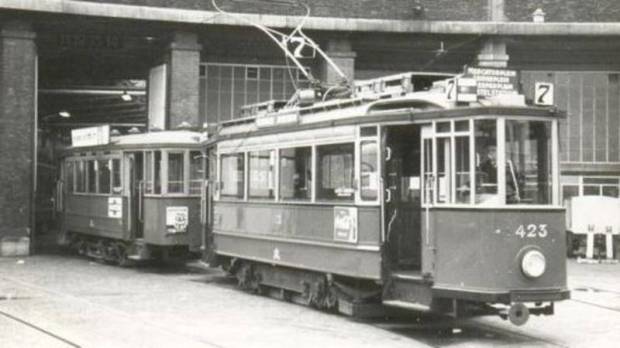
it still spread to other areas, including Zaanstad, Kennemerland in the west, Bussum, Hilversum and Utrecht in the east and the south.The strike did not last long. By 27 February, much of it had been suppressed by the German police. Although ultimately unsuccessful, it was significant in that it was the first and only direct action against the Nazis’ treatment of Jews in Europe.
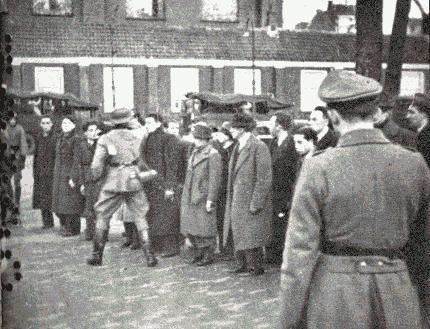
The Dutch resistance made its mark with the collection of intelligence that could be useful to the Allies. It was the Dutch resistance who informed the Allies of the fact that the SS IX and X divisions were in the region of Arnhem in September 1944 – information that was essentially ignored with disastrous consequences.Picture below is of some members of the 101st airborne and resistance fighters in Eindhoven.
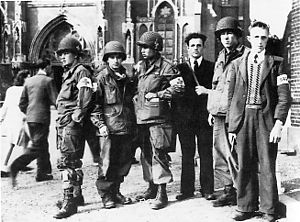
The Dutch resistance also helped Dutch Jews to escape – especially children. Nine organisations were created to do this and they specialized in hiding people, forging identity papers etc. This, along with its intelligence work, proved to be its most important work as opposed to the classic image of resistance units blowing up bridges etc.
Karl(Karel) Zaicsek Born 18 july 1921 (Pecsbanyatelep/Pécs (Hungary.), died 12 september 1944 ,Near Brunssum Netherlands.

Very little is known about this man. but yet is one the people whose name is mentioned on the monument in Lindenheuvel.
He was born in Hungary but he moved with his parents to the south East of the Netherlands, when is unknown but we do know his Father died on the 9th of February 1939, Karel was only 17 at the time.
Karel worked in the mine during the war but he also was a member of the council of resistance.
HIs acts of defiance against the German oppressors consisted of distributing illegal literature,ammunition and delivery of food to those who were in hiding.
On the 12th of September Karel and his mate Jan Barning were caught by German soldiers outside the entrance of the SBB-Stikstofbindingsbedrijf(Nitrogen Fixation factory).
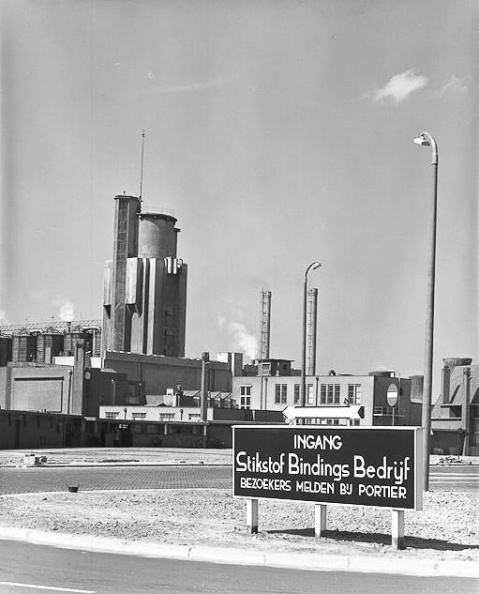
They had just come back with supplies, it is believed Karel had a basket of butter on his bicycle.
Rather then waiting to be brought to the German HQ the 2 decided to make a run for it eventhough they were escorted by a German soldier. Jan Barning threw his bike at the soldier and the pair ran for their lives. Jan was nearly shot in the head but managed to run into a nearby hostel for mine workers.
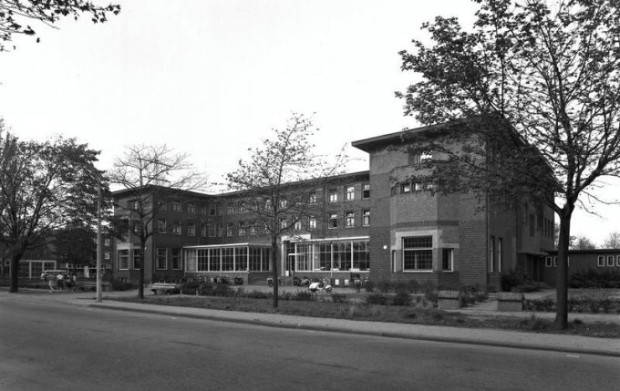
Karl Zaicsek was less fortunate and was caught between Sittard and Hoensbroek and was executed on the 12th of September 1944 although this sometimes is disputed because it is believed that the date of execution could also have been the 16th of Sepetember 1944.
It is widely believed that he was executed in the Brunssummerheide which is heath near the town of Brunssum.
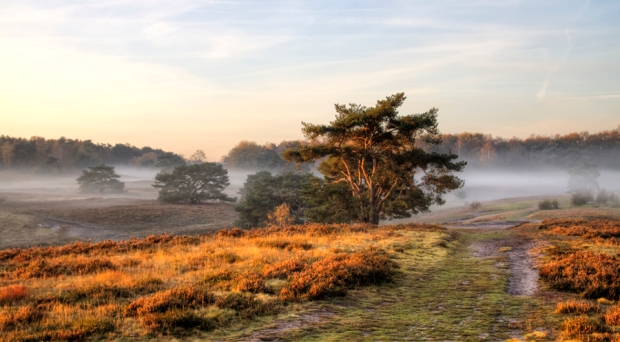
His family only received confirmation of his death in 1951. On the 20th of July 1951 they held a funeral service for them.
The sad thing about this is that the area would be liberated only a few days after his execution. The town of Geleen was liberated on 18 September 1944.
Related blogs
https://dirkdeklein.wordpress.com/2016/02/26/forgotten-history-hannie-schaft-resistance-fighter/
https://dirkdeklein.wordpress.com/2016/03/08/forgotten-history-pierre-schunck-resistance-fighter/
https://dirkdeklein.wordpress.com/2016/03/27/forgotten-history-major-bosshardt/
https://dirkdeklein.wordpress.com/2016/03/15/forgotten-history-frits-philips/

Donation
I am passionate about my site and I know you all like reading my blogs. I have been doing this at no cost and will continue to do so. All I ask is for a voluntary donation of $2, however if you are not in a position to do so I can fully understand, maybe next time then. Thank you. To donate click on the credit/debit card icon of the card you will use. If you want to donate more then $2 just add a higher number in the box left from the PayPal link. Many thanks.
$2.00

Donation
I am passionate about my site and I know you all like reading my blogs. I have been doing this at no cost and will continue to do so. All I ask is for a voluntary donation of €2, however, if you are not in a position to do so I can fully understand, maybe next time then. Thanks To donate click on the credit/debit card icon of the card you will use. If you want to donate more than €2 just add a higher number in the box left from the PayPal link. Many thanks
€2.00















Interesting story Dirk. I would make a small remark about the CPN (Dutch Communist Party) who were the main force of the February Strike. It’s a bit cynical that this political party, who actually were true freedom fighters for the Netherlands in the war, where treated as traitors after the war when it came to the point of assemble a coalition to lead the country.
LikeLike
I just left a reply about the CPN Dirk. Is it an option for you to write an article about Dirk de Vroome (Rooie Reus), just came up my mind when I replied about the CPN.
LikeLike
It’s on my list
LikeLike
Hallo,
I like your aricles, but have an objection.
I wanted to comment on your in the article about the Nazi regime killing disabled, especially children, and where you linked the current discussion about the right to die with dignity with this subject. In my view that is distorting the discussion in Canada by linking the two subjects, and seems to me a cheap shot directed at those ill and their relatives that strive to gain and implement the right to die with dignity, with support of their thealth care professional.
Johanna van Zanten
LikeLike
Dear Johanna, I am only stating facts as I see it. I am not aware of a discussion in Canada. I was referring to those who don’t even get a chance to live. But your input is appreciated
LikeLike
Reblogged this on History of Sorts.
LikeLike
I found this article particularly interesting as I am reading a History of S.O.E. by M.R.D. Foot at towards the end there is a section about the Dutch S.O.E. (Special Operations Executive) and the tragedy of Operation Nord Pole about the German infiltration of it and it was a dreadful tragedy. There was a strong feeling of resistance in the Netherlands and some very brave men and women lost their lives.
LikeLike